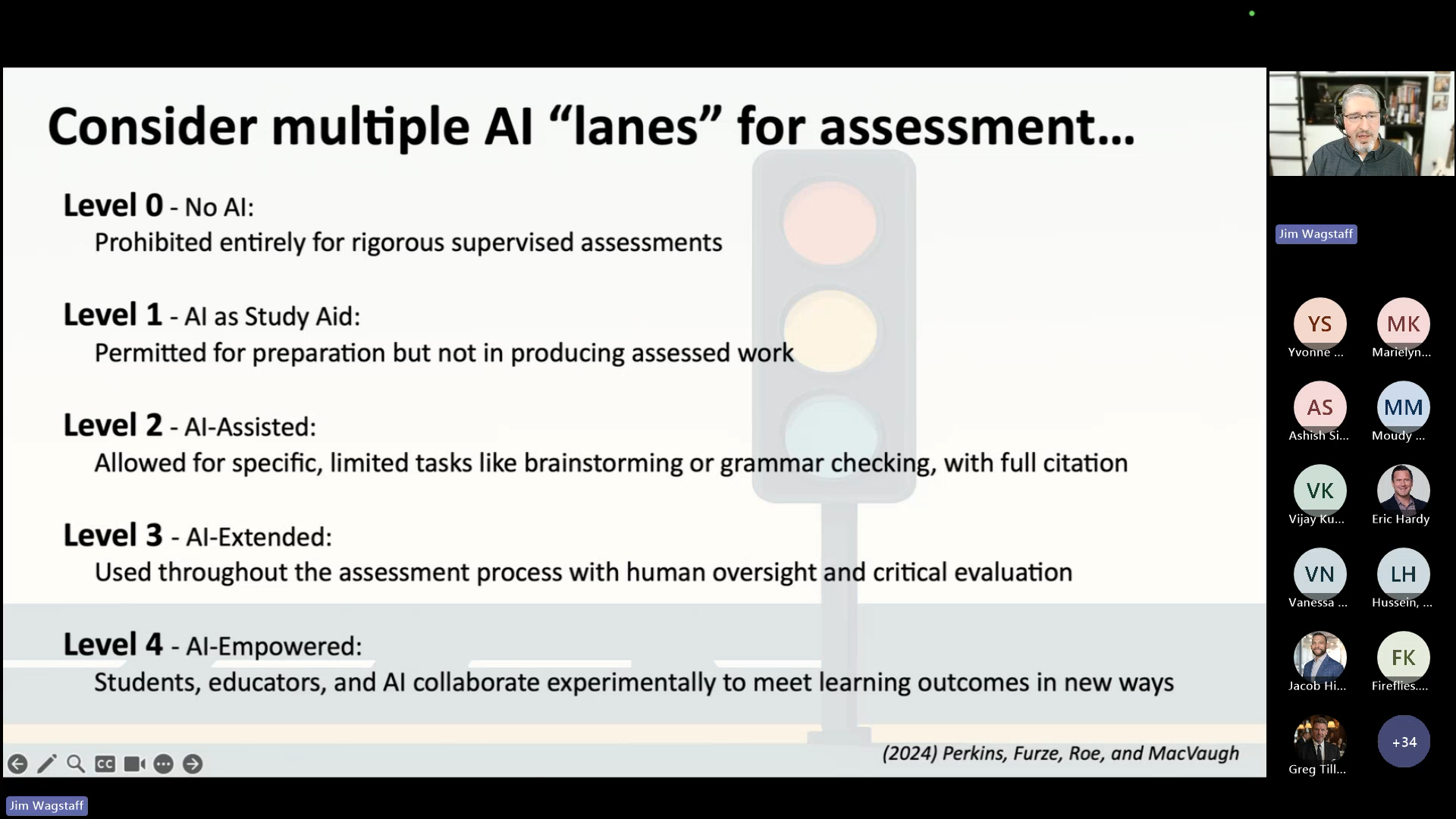Authentic, Human-Centered Assessment for Education in the Age of AI: Key Takeaways From Our Recent Webinar
Nov 19, 2025Artificial intelligence is reshaping how students learn, think, and complete their work. Last week, our co-founder Jim Wagstaff hosted a session titled Authentic, Human-Centered Assessment for Education in the Age of AI to help educators explore how assessment can stay meaningful in an AI rich world.
If you missed it, here is a clear and expanded summary of the session, along with the full recording.
Across both K–12 and higher education, educators joined the session with a shared question:
How do we design learning experiences that reveal real understanding when AI tools are now widely accessible?
Below are the main ideas Jim covered, along with examples and suggested places where you can add screenshots from the session.
1. AI can already complete many traditional assessments
One of the first points Jim made is that large language models can now produce strong responses on many of the assessments educators have relied on for decades.
He explained that tasks such as:
- essays
- short answer responses
- reflections
- literature reviews
- case analyses
are now achievable at a B to A level by general purpose AI tools.
This does not mean students intend to cheat. It shows that assignments focused mainly on polished written output no longer provide a reliable picture of student learning.
2. Detection tools are unreliable and inequitable
Jim discussed a key frustration shared by many educators: AI detection tools cannot be relied on.
Key issues include:
- false positives
- false negatives
- bias against multilingual writers
- easy bypassing through paraphrasing tools
- inconsistent accuracy across models
Jim emphasized that the deeper issue is not policing student behavior. It is designing assessments that make genuine thinking visible.

3. The AI Assessment Scale helps set clear expectations
A major highlight from the session was the AI Assessment Scale, which helps teachers communicate how much AI use is appropriate for each task.
This scale gives students clarity and reduces confusion about what is allowed.
The levels include:
Level 0 – No AI use permitted
Level 1 – AI allowed for basic steps only
Level 2 – AI allowed with transparency
Level 3 – AI co-production with explanation
Level 4 – AI empowered learning, focused on process and reflection

4. Authentic and integrative assessment support deeper learning
Jim spoke about the growing need for assessments that uncover how students think, not just what they can produce.
Authentic assessment
Assignments that mirror real-world reasoning, even when they take place inside the classroom.
Examples include:
- analyzing a situation
- making a recommendation
- comparing options
- evaluating choices
- taking on professional roles
Integrative assessment
Small, frequent learning checks woven into the process rather than high-stakes tasks.
Integrative assessment is supported by AI tools that can give instant scaffolding and feedback, helping students engage deeply without increasing teacher workload.
5. Role plays reveal student thinking in real time
One of the most popular parts of the webinar was Jim’s demonstration of AI-supported role plays.
Role plays help students practice skills that are hard for AI to replicate, such as:
- explaining reasonin
- responding to new information
- asking clarifying questions
- making and defending decisions
- applying concepts in new contexts
Jim demonstrated two examples:
Nutrition Role Play
A student acts as a dietician, giving advice to a patient. The system challenges their reasoning using rubric-aligned prompts.
Chemistry Role Play
Students explain reaction pathways and respond to conceptual questions. The focus is on their understanding, not the final written answer.
Try the AI Role Play Challenge
6. Try the “vulnerability stress test” on your assignments
Jim offered a simple five-step test that educators can run on their own assignments.
Vulnerability Stress Test
-
Take an existing assignment.
-
Put the prompt into an AI tool.
-
Review the AI-generated response.
-
Ask whether this undermines learning.
-
If yes, make one small design adjustment.
Examples of small adjustments:
- adding local context
- requiring personal interpretation
- including reflection
- adding structured reasoning steps
- using oral or real time components
Closing Thoughts
AI does not weaken assessment. It invites us to rethink it.
With intentional design, educators can create tasks that reveal real understanding, encourage reasoning, and build confidence in student work.
If you would like to explore how these ideas could work in your course or grade level, our team would be glad to talk through examples.


